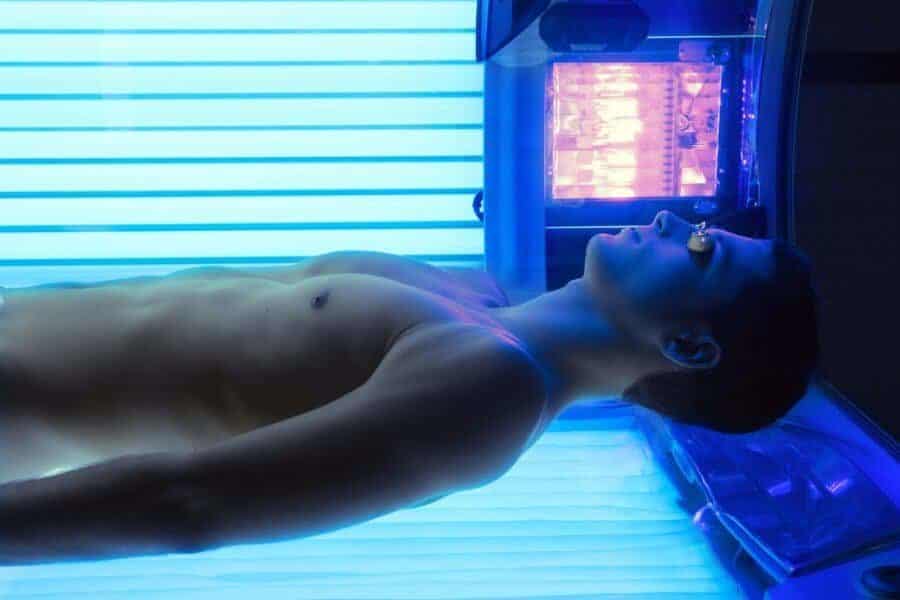Even though men use tanning beds at lower rates than women, men who tan tend to do it in riskier ways, according to a study by researchers at the University of Connecticut. The findings should help public health officials rethink how, and to whom, they’re targeting anti-tanning messages.
Because the stereotypical tanning salon client is a young woman, almost all the research and health messaging on tanning has focused on that demographic. But the new research in the Journal of the American Academy of Dermatology found that one in three people who use tanning beds in the U.S. are male.
Men who tan report using tanning beds with about the same frequency as women, but smoke and binge drink at higher rates than their female counterparts, and they also tend to treat tanning more like an addiction than women do, say the authors. A full 49 percent of men who used tanning beds fit a pattern of addictive behavior around tanning.
“That was really surprising,” says lead author Sherry Pagoto, a clinical psychologist and director of the UConn Center for mHealth and Social Media. “If they tan with the same frequency as women, why would tanning in men be more addictive?”
Pagoto and her colleagues conducted a national survey of 636 people who answered “yes” when asked whether they had ever used a tanning bed. They queried the participants about frequency of use, preferred locations to tan, how they felt about tanning, and why they did it.
The differences between men and women were marked. Women preferred to tan in salons, and said they valued low cost, cleanliness, and convenience. Men who tanned preferred less regulated settings, such as gyms or private homes. They said they liked to tan to accentuate the appearance of their muscles, or as a reward after working out. They also reported smoking tobacco, binge drinking alcohol, and drinking soda significantly more often than women who tan.
Men also answered “yes” when asked if they ever felt anxious if they weren’t able to tan, tanned to relieve stress, or spent money on tanning even when they couldn’t afford it. They agreed with statements such as “I’d like to quit but I keep going back to it.”
There’s a population of men who tan and engage in other risky behaviors and are very unlike the young women that health educators assume are at risk of tanning bed health impacts, says Pagoto.
Pagoto and her team are pursuing another study to delve more deeply into who tans, asking questions about sexual orientation, given that recent research has revealed that homosexual men are just as likely to use tanning beds as young women. The research should help health officials trying to warn the public of the very real connection between tanning beds and skin cancer, she says.
Sun lamps and tanning beds are legal for adult use in all 50 states, even though the Food and Drug Administration (FDA) classifies them as a Class 1 carcinogen like tobacco, radon, and arsenic, and the use of tanning beds has been linked to melanoma, the deadliest form of skin cancer.
Most current marketing messaging is targeted to teen- and college-aged women, according to Pagoto. Men who tan are unlikely to relate to that type of message. Pagoto is now applying social media marketing principles to develop prevention messages that resonate with specific audience segments.
“We’re also hoping to spread the message on college campuses, since the tanning industry heavily markets to college students,” she says.
Toward that end, the National Council for Skin Cancer Prevention recently launched the Skin Smart Campus Initiative, a national initiative, co-chaired by Pagoto, to help colleges educate their students about the dangers of tanning, and prevent tanning salons from taking advantage of students. You can learn more and get involved by visiting https://www.skinsmartcampus.org/site/.


